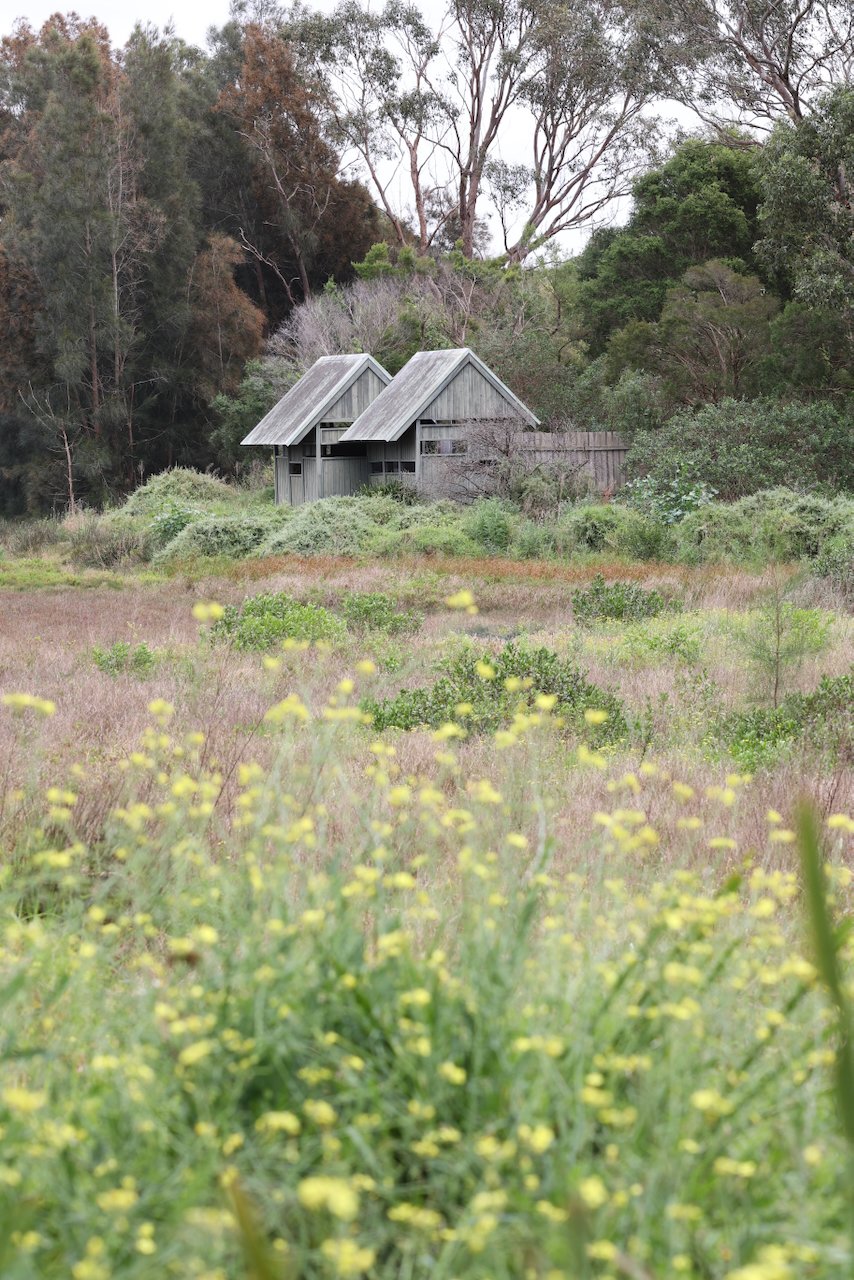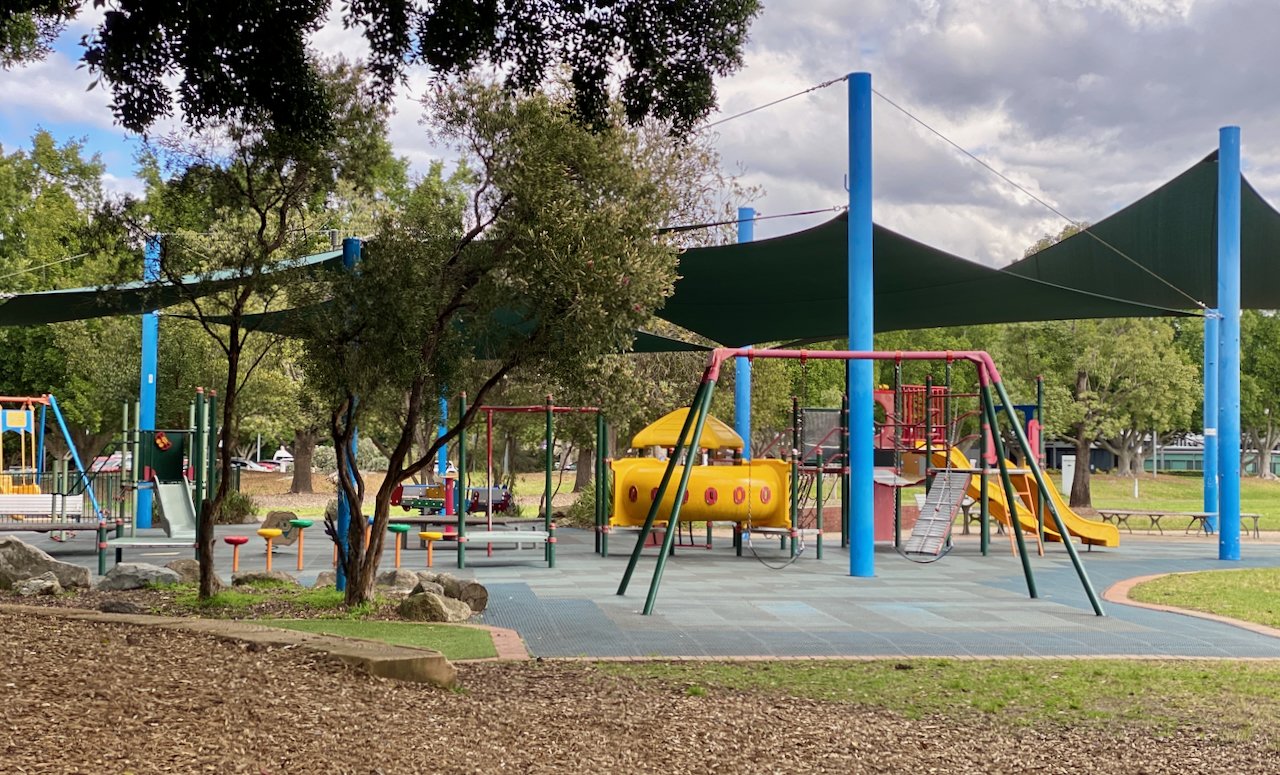Bicentennial Park Homebush
This is a great walk for families, nature lovers and well, anyone really.
The park is easily accessible by car or train and the path is mostly level and sealed.
There’s something for everyone along the way: parklands, wetlands, mangroves, playgrounds, lookouts, historical remnants and more.
The path outlined here is about 11 km long and will take between 2-3 hours to complete, more if you stop to picnic, play or if, like me, you get distracted by the birds.
You can easily shorten the walk by cutting out sections and taking shorter loops. Parking is available at various points so you could break the walk up into smaller loops starting from different points. This trail, From Brickworks to Birds is one suggestion. It is about 7km long and covers the Brickworks, Wentworth Common and the Waterbird Refuge.
The Land
Bicentennial Park is part of the larger Sydney Olympic Park, developed to host the 2000 Olympic Games. Much of the land was once home to government operations and heavy industry so major remediation and renewal work was required to prepare for the Games and for the park’s ongoing use as a sporting and entertainment venue and parkland.
Bicentennial Park is now a haven for endangered ecological communities, Over 150 different bird species and seven frog species have been identified here. It is also home to 400 native plant species, 10 bat species, and to numerous reptiles and fish.
The Brick Pit
The walk begins at the Brick Pit, on the edge of Bicentennial Park. There is plenty of parking outside the entrance to the Brick Pit and the nearby Wentworth Common.
The Brickpit Ring is an accessible walkway that hovers above a water storage area and what used to be the State Brickworks. Signage and old buildings retained on the site speak to its heritage.
But the real star of the show here is the (audible, though rarely visible) Green and Golden Bell Frog. If you were around during the construction phase of Sydney Olympic Park, the name of this frog might ring a bell.
It was in this area, designated to house the Olympic Tennis Centre that about 300 of these then endangered frogs were discovered in 1992. As a result of the discovery, development was halted and the planned tennis centre was relocated so the frogs could be left in peace. Their environment was protected and improved in the process and their numbers have since swelled.
The Ring Walk was created in 2006. It allows visitors to view their habitat, which attracts swans and other birds, frogs, and insects too, without endangering it.
As you walk around the ring you’ll find information panels outlining the history of the brickworks and the make-up of its current residents. Listen out for the grunts and growls of the protected resident frogs
Wentworth Common
The walk continues along a shared pathway through Wentworth Common, passing a playground, ponds, picnic tables and playing fields and an oversized raised mound known as the Bay Marker.
The Bay Marker is actually a lookout, accessed via a spiral path. From its summit you get 360 degree views over Sydney Olympic Park and the surrounding landscape. It is one of five raised geometric forms in the greater park area that serve to orient visitors. Each is between 10-20 metres high and is made of materials found on site but deemed unsuitable for re-use in construction
A little way beyond the Bay Marker you’ll see a path veering off to the right which will take you over the road and into the wetlands.
Waterbird Refuge
The Waterbird Refuge is a big drawcard for bird lovers all over Sydney.
The refuge was created in the 1950s and has become a significant habitat for a diverse range of resident and migratory species. It is part of an extended habitat that exists along the Parramatta River where thousands of waterbirds come to feed and roost.
The bird hide near the entrance to the wetlands is a great spot from which to observe the birds without disturbing them.
Among the birds you might see here are stilts, spoonbills, cormorants, pelicans, herons and egrets. Along the path, look out for fairy-wrens, kingfishers and fantails. (For a full list of the many species observed here see ebird.)
Many of the species seen here are in decline elsewhere and are protected under Commonwealth legislation. Nutrient levels in the water are monitored and the water’s edge is lined with reeds and other barriers to preserve this fragile environment and its inhabitants.
Rusty Remnants
Adjacent to the wetland beyond the mangroves at the shore’s edge is Homebush Bay.
From the sixties to the nineties, this area of Homebush Bay was used as a ship-breaking yard for the Sydney Ports Authority and private operators. A number of rusty hulks remain in the bay and are protected for historical interest under the Commonwealth Historic Shipwrecks Act. The tugboat SS Heroic and defence vessel HMAS Karangi are among those visible in the bay. Both vessels saw service during World War II.
Mangrove Boardwalk
The bird sanctuary extends beyond the refuge and salt marshes to the Badu Mangroves. This is the largest mangrove forest remaining on the Parramatta River. The mangroves play an important role in water filtration. They also serve as a sanctuary for birds, bats and other wildlife and as a kind of nursery for young fish, who grow to move on to other waterways.
Elevated boardwalks wind their way through the centre of the mangroves. The boardwalks are well-maintained and are pram and wheelchair friendly.
As you walk through the mangroves, take time to listen out for the unique sounds of the place and look out for Dreaming Track (Muru Nanga Mai), a poem by Lorna Munro that has been translated into D’harawal (a local language), and etched into parts of the boardwalk.
To the Village Green
Beyond the boardwalks, the pathway winds its way alongside Powells Creek toward the Village Green.
On the way you will pass the Treillage Tower and nearby water fountains. Climb the tower for views of the wetlands, Homebush Bay and the city skyline.
Look out for cyclists and other pedestrians as you wind your way along this part of the trail as there are some blind corners.
Village Green
The Village Green is a largely open parkland space featuring a playground, cafe, picnic areas and a large lake. Bikes are available for hire beside the cafe.
The playground here is a popular one especially on weekends. There are nearby barbecues and picnic tables.
The hills around the lake are perfect for a picnic and there are more tables and barbecues here as well as undercover pavilion seating.
Waterview Cafe offers an all day breakfast and lunch menu. The cafe is open from 8:30am - 3pm, Monday to Friday and from 8am to 5pm on weekends.
Lake Belvedere
The centrepiece of this part of the park is Lake Belvedere. Around the lake are some pretty native gardens and places to stop, sit and take in the surrounds.
A large jetty overlooks the lake and is a great vantage point from which to view the many birds that flock here. A smaller overwater walkway on the other side lets you get even closer to the action.
The lake and its island centre provide a breeding habitat for a large number of waterbirds, most notably cormorants, ibis and spoonblls. Other inhabitants of the lake include turtles, eels and many species of native fish.
Adjacent to the lake on the return side is the boardwalk-covered ‘Fishway’ which is worth a look. Information panels explain the important role the fishway plays in the wetlands ecosystem and the wildlife that lives there.
To Return
To return to the start you will take roughly the same route though there are some side paths that may be of interest. And check in on the birds again on your way back. You never know who may have turned up in your absence.
In the area
Bicentennial Park is huge, 40 hectares in total, so there is much more to see. And when you take in the whole of Sydney Olympic Park, of which it is part, there is a whopping 430 hectares to explore, including 35 km of bike trails, walking paths and scenic boardwalks.
If you’re up for more steps when you’ve completed this walk, there are many options. Newington Nature Reserve has a loop trail on the shores of the Parramatta River. And Bressington and Mason Parks, (on the other side of Homebush Bay Drive from the Village Green) are also worth a look, especially if you enjoyed seeing the wetlands and birdlife.
Sydney Olympic Park plays host to many sporting fixtures and concerts and they regularly host guided walks and behind the scenes tours in the parklands. Check their website for more information.



































